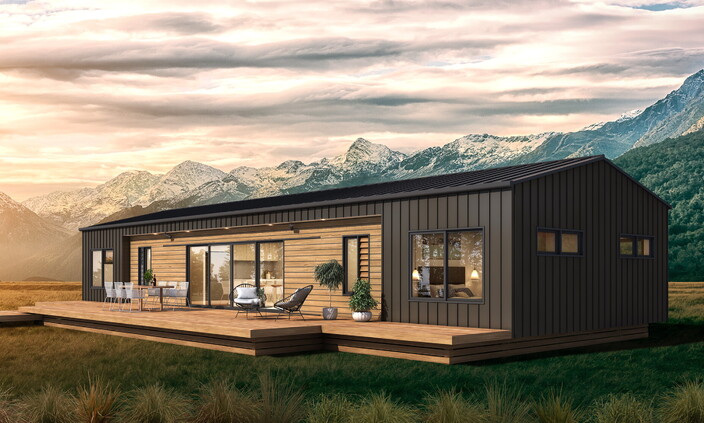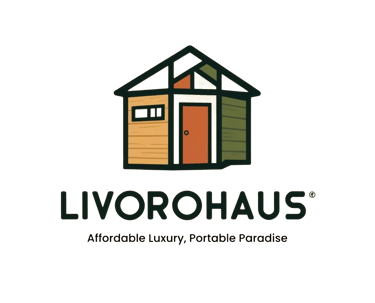Exploring Affordable Housing: Why Prefab Homes Are 40% Cheaper Than Traditional Builds
1/13/20254 min read


The housing market in 2025 presents a significant challenge for many prospective homeowners – skyrocketing costs and limited availability have made traditional homes increasingly unattainable. However, there's a revolution happening in the construction industry that's making homeownership more accessible: prefabricated homes. These innovative housing solutions are consistently proving to be 40% cheaper than traditional builds, without compromising on quality or design. Let's dive deep into why prefab homes are becoming the go-to choice for cost-conscious homebuyers and what makes them such an affordable housing solution.
A Game-Changing Cost Difference
When Sarah Mitchell started her home-buying journey in early 2025, she was shocked by the traditional home prices in her area. "I was looking at spending over $450,000 for a modest 2,000-square-foot home," she recalls. "Then my realtor suggested looking into prefab homes. I ended up getting the same size house, with better energy efficiency features, for just $270,000. The savings were incredible."
Sarah's experience isn't unique. Across the country, prefab homes are delivering significant cost savings through a combination of innovative manufacturing processes, efficient labor utilization, and smart material management. Let's break down exactly how these savings add up.
The Manufacturing Edge: Efficiency Meets Economy of Scale
Imagine a car being built in your driveway versus one constructed in a state-of-the-art factory. The difference in efficiency and cost would be astronomical. The same principle applies to home construction. Prefab homes are built in controlled factory environments using assembly-line techniques that have been perfected over decades.
In these facilities, you'll find:
Advanced automation systems that reduce labor costs by up to 60%
Climate-controlled environments that eliminate weather-related delays
Precision equipment that minimizes material waste
Quality control processes that catch issues early
James Chen, Operations Manager at ModernBuild Prefab, explains: "Our factory can complete the main structure of a home in just 10 days. The same process would take weeks or months on a traditional construction site."
The Labor Equation: Less Time, Lower Costs
One of the most significant factors in the 40% cost reduction is labor efficiency. Traditional construction requires coordinating multiple specialized crews who need to work sequentially, often with weather delays and scheduling conflicts. Prefab construction transforms this process entirely.
Consider these labor cost comparisons:
Traditional Construction:
Multiple specialized crews: $40-50 per square foot
Weather delays adding unpredictable costs
Sequential work requiring careful coordination
Extended project timelines increasing labor hours
Prefab Construction:
Streamlined factory workforce: $20-25 per square foot
Climate-controlled environment eliminating delays
Parallel work processes reducing total hours
Efficient assembly reducing on-site time
"We can complete a prefab home with about half the labor hours of traditional construction," notes Lisa Rodriguez, a construction cost analyst. "This efficiency directly translates to savings for the homebuyer."
Smart Material Management: Waste Not, Want Not
Material costs represent another area where prefab homes shine. Through bulk purchasing power and precise manufacturing processes, prefab builders achieve significant savings that are passed on to homebuyers.
Traditional construction sites typically see material waste rates of 15-20%. In contrast, prefab facilities maintain waste rates below 5% through:
Computer-optimized cutting and assembly
Bulk material purchases at wholesale prices
Climate-controlled storage preventing material damage
Recycling programs for unused materials
David Thompson, a materials manager at EcoPreFab Homes, shares: "We can purchase materials at 15-25% below retail prices due to our volume. Plus, our precision manufacturing means nearly every piece of material is used efficiently."
Transportation and Assembly: The Hidden Efficiency
While transportation adds some cost to prefab homes, the savings in other areas more than make up for it. Modern prefab manufacturers have optimized their transportation and assembly processes to minimize these expenses.
Key cost-saving strategies include:
Optimized module sizing for efficient transport
Strategic route planning reducing fuel costs
Rapid on-site assembly minimizing labor needs
Reduced equipment rental periods
Quality Control: Better Buildings, Lower Costs
One common misconception is that lower costs mean lower quality. In reality, the factory-controlled environment of prefab construction often results in superior build quality, which translates to long-term savings.
Quality control advantages include:
Standardized inspection protocols
Consistent material quality
Protected construction environment
Experienced specialist teams
Energy Efficiency: The Gift That Keeps Giving
The savings don't stop after construction. Prefab homes are designed with energy efficiency in mind, leading to significant long-term cost benefits:
25-35% lower monthly energy bills
Superior insulation standards
Airtight construction techniques
High-performance windows and systems
Michael Foster, an energy efficiency consultant, notes: "Prefab homes consistently outperform traditional builds in energy efficiency tests. The controlled manufacturing environment allows for more precise installation of insulation and air-sealing measures."
Financial Benefits Beyond Construction
The advantages of prefab homes extend into financing and insurance:
Financing Benefits:
Specialized prefab loan programs
Shorter construction loan periods
More predictable costs
Better interest rates due to reduced risks
Insurance Advantages:
Lower construction insurance costs
Reduced risk factors
More competitive premiums
Better coverage options
Real-World Success Stories
Let's look at two recent prefab projects that demonstrate these savings:
Urban Project Example:
Traditional Build Estimate: $450,000
Final Prefab Cost: $270,000
Total Savings: $180,000
Construction Time: 3 months vs. 9 months
Suburban Project Example:
Traditional Build Estimate: $380,000
Final Prefab Cost: $228,000
Total Savings: $152,000
Construction Time: 2.5 months vs. 7 months
The Future of Affordable Housing
As we look ahead, the cost advantages of prefab homes are likely to increase further. Technological advancements on the horizon include:
Integration of 3D printing technology
Advanced automated assembly systems
Smart home pre-integration
Innovative material development
Industry experts predict these developments will drive even greater cost savings in the coming years.
Making Your Decision
While the 40% cost savings make prefab homes attractive, they're not the right choice for everyone. Consider these factors when making your decision:
Positive Indicators:
Budget is a primary concern
Timeline is important
Energy efficiency is valued
Standard designs meet your needs
Consideration Points:
Site accessibility for delivery
Local building codes and restrictions
Lot conditions and preparation needs
Design customization requirements
Conclusion: A Smart Choice for Smart Homebuyers
The 40% cost savings offered by prefab homes represent a significant opportunity in today's challenging housing market. Through a combination of manufacturing efficiency, reduced labor costs, material optimization, and energy savings, prefab homes deliver exceptional value without compromising quality.
As Amy Chen, a recent prefab homeowner, puts it: "I was initially skeptical about choosing a prefab home, but the cost savings were too significant to ignore. Now that I'm living in my home, I couldn't be happier with the decision. The quality is excellent, my energy bills are low, and I saved enough money to fully furnish the house and still have a comfortable emergency fund."
For those seeking an affordable housing solution in 2025, prefab homes offer a compelling combination of cost savings, quality construction, and energy efficiency. As the industry continues to evolve and improve, these homes are positioned to play an increasingly important role in solving the housing affordability challenge.
Remember: While the 40% savings are significant, every situation is unique. Consult with local prefab manufacturers and contractors to understand specific costs and options in your area. The key is to make an informed decision based on your particular circumstances and needs.


